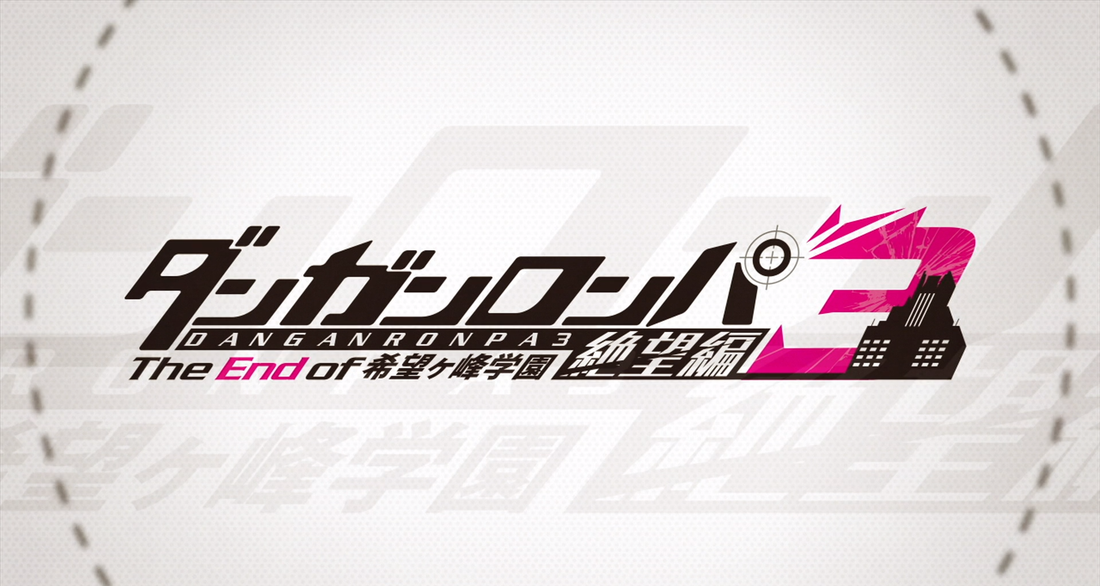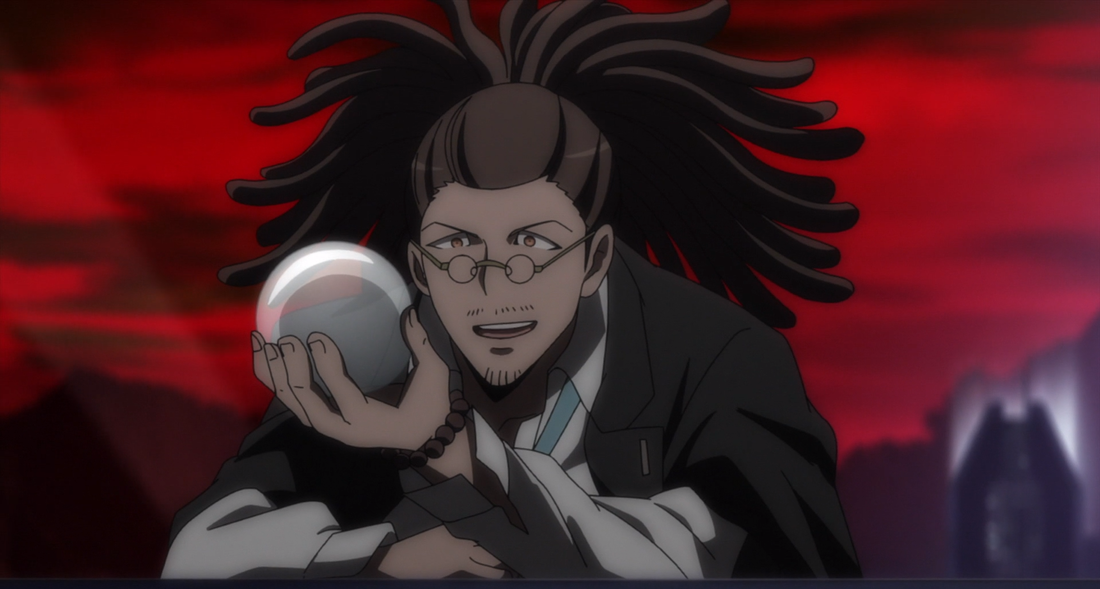|
If you’ve spent any time playing the Danganronpa games, then you know very well that while each of the three games does a good job of concluding its own story, the overall arc is left somewhat ambiguous. Danganronpa 3: The End of Hope’s Peak High School does a great job of closing out most of the plot holes and giving us much needed closure, with a handful of hiccups along the way. Danganronpa 3, not to be confused with the recently released Danganronpa V3 game, is an anime that tells two different stories which are closely tied to each other in order to patch up the remaining plot holes in Makoto Naegi’s story arc. That being said, this anime is designed from the ground up for people who have played Trigger Happy Havoc, Goodbye Despair and Ultra Despair Girls. The Ultra Despair Girls connection is only minor, and you won’t miss out on much if you haven’t played it, but the other two games are integral to this story. Watching this without playing the games would be like trying to jump into Star Wars at Return of the Jedi. As such, this review will definitely contain spoilers for the games, since it’s assumed you’ve played the games going into this anime. You have been warned. As mentioned, DR3 contains two main story arcs: Future and Despair. They both tell very different stories while at the same time being completely intertwined with each other. Let’s talk about the Future Arc first. Shortly after Makoto and friends worked together in secret to put Class 77 (the cast from DR2) into the Neo World Program to bring them back to their original state from before becoming the Ultimate Despairs, they’re called back to the Future Foundation. They discovered this secret and Makoto takes full responsibility for his actions, allowing the rest of the team to continue to serve the Future Foundation as needed. The leaders at FF decide they’re going to put Makoto on trial for his actions, even going as far as claiming that he’s actually become an Ultimate Despair and is tainted. During this chaos, something happens and they all pass out. Makoto, Kyoko, Aoi and the new cast of characters wake up to find wristbands on them with a personal warning as to an action they are forbidden to perform. Performing this action injects poison into them and kills them, quickly proven by the first death. Noticing the familiar Monokuma themed monitors, they’re informed that they’re being forced into another killing game, with the twist being that they are forced to sleep through injections at set intervals, at which time a single person is woken up to allow a killing to take place. With the rules set forth, the story begins with the usual betrayal, distrust, insanity and Makoto throwing his hope all over the place. Thankfully, Yasuhiro is locked outside which keeps his annoying self away from the bulk of the plot. Also missing are Byakuya, who works for a different branch of FF and Toko, who is still on Towa Island with Komaru (from Ultra Despair Girls). The premise is good, and the idea is sound, but one of the issues with the story is that almost half the cast is uninteresting, underdeveloped and, frankly, quite boring. Having an interesting cast is the most important part of making the killings that much more jarring, but with them not being fleshed out or interesting we’re merely left underwhelmed. More than anything, the killing game feels like a filler meant solely to help bring closure to the despair that’s taken over the world. In that regard, it does a fantastic job. Makoto, a mostly boring main character in the first game, is given more personality and depth in this anime, making him far more interesting than he ever was. Having Aoi and Kyoko around help to give viewers this grounded sense of familiarity as well. The other major issue is that the mystery doesn’t feel very mysterious, and the anime can be a tad bit predictable. These issues aside, it’s actually quite fun being able to learn more about the Future Foundation and seeing how Makoto is able to face this one final challenge before being able to right the wrongs of Junko Enoshima. The Despair Arc is almost the opposite of Future. Taking place before DR1, it tells the story of Class 77, and how they became the Ultimate Despairs. This means that not only do we get to see them as normal Ultimates before being tainted, and not only do we get to see Chiaki Nanami in the flesh, we also get to see Junko Enoshima plan and execute her plan of initiating the killing game and plunging the world into despair. That means that we are forced to watch the massacre that triggers the start of these events, which is alluded to in the series a lot but never witnessed. It’s every bit as brutal as we imagined, and can be quite difficult to sit through, which is exactly as it should be. The biggest issue I had with the Despair Arc is that the first half of the series feels like a drag, since we already know an overview of everything that happened leading into DR1. It’s not until Junko gets directly involved with Class 77 and Chiaki starts getting really fleshed out that things get extremely interesting. The games always left the story of how Class 77 became Ultimate Despairs quite vague, so getting to see it, in all of its horrifyingly depressing details, is quite the thrill and makes up for the first half a million times over. It also makes Class 77 have a lot more depth than they already had, and clears up a lot of the underlying questions about Hope’s Peak that have been hinted at but never really answered. Why was the world so easily dragged into despair? How did Junko manage to convert Class 77 so successfully? How was the killing game even allowed to happen? All these questions and more are made clear. I’m not usually a fan of prequels, since we know how things will turn out in the end, but the folks behind this anime managed to still assure that we had our fair share of twists and turns in order to keep us on our toes. They even managed to turn an inevitable event into one of this most heart-wrenching moments in the entire franchise. After all of this, there is a final episode called the Hope Arc which takes place right after the Future Arc, and ties together all the facets of both arcs into a well-crafted and satisfying conclusion to the series. It’s not very surprising, and is fairly cookie-cutter in comparison with how many curveballs the franchise likes to throw at us, but the Hope Arc is still a satisfying closure to everything that’s happened thus far. Despite half of the entire series being mediocre, the other half more than makes up for this and makes this quite an enjoyable anime that will please fans of the franchise aching for more Danganronpa. Something I will mention though, is the odd viewing order. The show should be viewed in alternating episodes from Future to Despair, ending finally in Hope (i.e. Future 1 -> Despair 1 -> Future 2 -> Despair 2 -> … -> Future 11 -> Despair 11 -> Future 12 -> Hope). It looks confusing now, but this was the actual airing order of the series, and was specifically designed that way so that after events transpire in the Future episode, the Despair episode will expand on the past while tying directly into concepts presented in the Future episode. This is why I say both arcs are closely tied together. I thoroughly enjoyed the anime, and don’t regret watching it one bit. With Danganronpa V3 taking place at some point after this anime and seemingly concluding the franchise as a whole, it’s highly advised that you watch this before heading into the new game. Fans of Danganronpa will not be disappointed. We don’t get the same kind of in-depth character development that we’ve come to expect in the franchise, but the overall story is done well enough to be considered a worthy installment within Danganronpa. Be sure to bring all the hope you have, because the despair will be plentiful in Danganronpa 3: The End of Hope’s Peak High School.
NOTE: The entirety of the series can be viewed for free on the official Funimation site here. Ads are present of course, unless you decide to become a paid subscriber. - Teepu
0 Comments
Leave a Reply. |
Search
Contributors◆ Hinacchi
◆ J.D. ◆ Janette ◆ Manuel ◆ Megan ◆ Nestor ◆ Rose ◆ Sylvia ◆ Teepu Support Us On Patreon!
Archives
May 2025
|
© 2014-2025 A-to-J Connections. All Rights Reserved.







 RSS Feed
RSS Feed